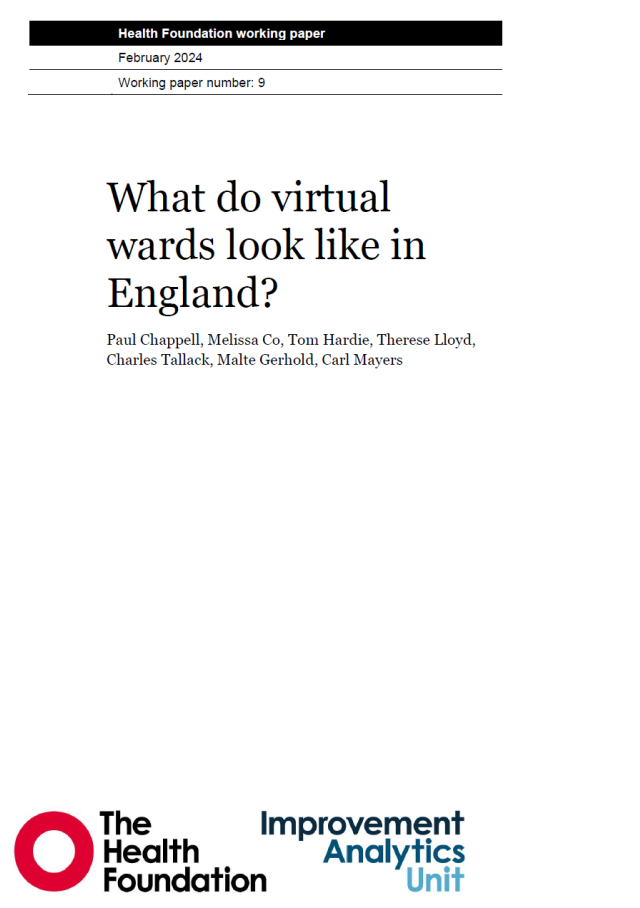What do virtual wards look like in England?
February 2024

Key points
- The Improvement Analytics Unit (IAU) is a partnership between the Health Foundation and NHS England. In this working paper, the IAU uses aggregate national data to explore what virtual wards currently look like across England and their effects on patients, staff and hospital capacity.
- Virtual wards provide hospital-level care to patients in their own homes. There are many different models of virtual wards. Some cover specific conditions, while others provide care for a much broader range of patients.
- Virtual wards have the potential to improve outcomes for both patients and the health care system. But we need high-quality data, careful monitoring and robust evaluations to understand if this is the case – and for which patients and in what contexts. This will provide learning and drive improvement.
In April 2022, NHS England launched its national virtual ward programme with the long-term aim of providing 40 to 50 virtual ward beds per 100,000 people in England. So far, every integrated care board in England has introduced virtual wards. Further aims of this programme include improving patient choice and experience, avoiding risks associated with inpatients stays and improving hospital flow by reducing lengths of stay and freeing up beds.
In this working paper, the IAU analyses aggregate national data on virtual wards to describe what virtual wards currently look like across England and discuss the effects of virtual wards on patients, staff and hospital capacity, as well as the gaps in the evidence.
It is not yet clear if virtual wards reduce pressure on hospital beds. We do not know how many of the patients cared for on virtual wards would have been in hospital if they were not in a virtual ward bed. Better data will help with this.
Virtual wards may benefit some patients, but more research is needed, including on equity. They also may benefit patients with certain demographics or conditions more than others. Moving resources to virtual wards might also have unintended consequences for other services and their patients.
To enable better evaluation and improvement of virtual wards, we need good data. Current national virtual wards data only provide limited patient information. NHS England is developing a national minimum dataset for virtual wards that will allow better analyses.
Cite this publication
Work with us
We look for talented and passionate individuals as everyone at the Health Foundation has an important role to play.
View current vacanciesThe Q community
Q is an initiative connecting people with improvement expertise across the UK.
Find out more


